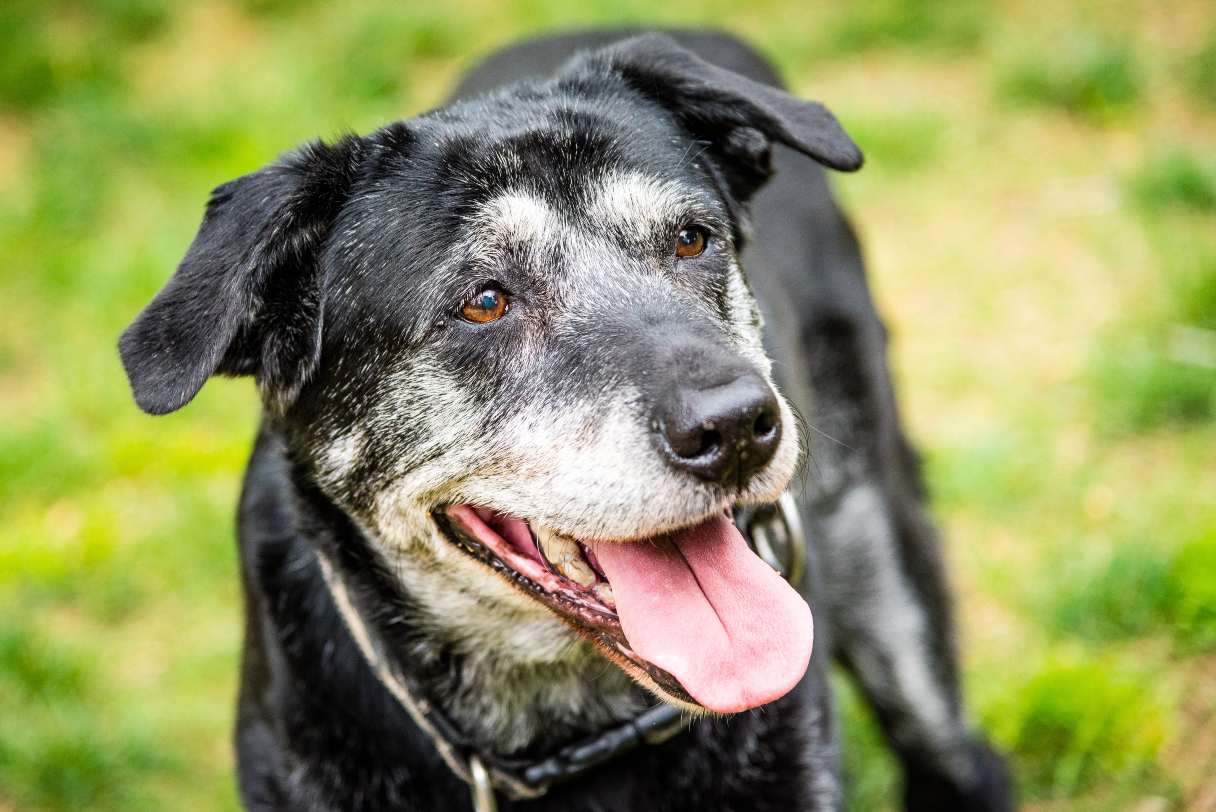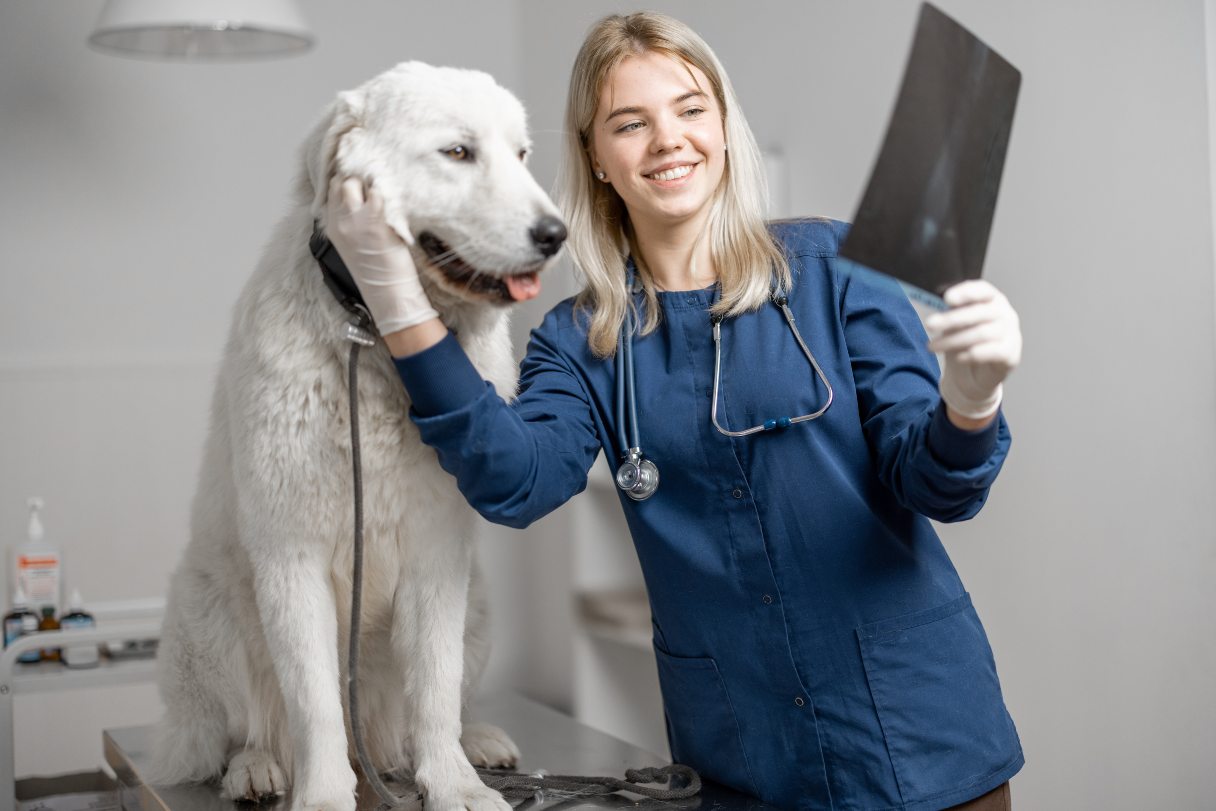It hurts your heart to know your dog is hurting — but their pain isn't always easy to see. Dogs are sometimes so good at hiding pain that it was once believed they had a lower sensitivity to pain than humans. However, veterinarians now know there's virtually no difference between pain signals in a dog's brain versus a human's.1
Why do dogs mask their pain? In the wild, this instinct makes them less vulnerable to predators or to other dogs who are above them in the pack order.1 But from a pet parent's perspective, it makes it more difficult to recognize when your fur baby is hurting and needs help.
Fortunately, learning some key signals they may give off can help you identify possible issues more quickly. In addition to physical symptoms, dogs often give behavioral cues that can clue in a perceptive pet parent to their suffering. We'll go over some things to watch out for below.
Read Related Articles
Is it Time to Say Goodbye? 21 Signs a Dog May Be Dying and How to Help
11 Signs Your Pet May Need Physical Therapy
1. Limping
Limping can indicate a wide range of injuries or medical conditions. Whether the limping occurs in the front legs or the hind legs can often give your vet a clue to help narrow it down. Here are some of the things that could cause your dog to limp:2
- Osteoarthritis
- Joint or hip issues
- Broken or fractured bones
- Strained muscles
- Sprained or ruptured ligaments
- Paw issues or injuries
- Autoimmune diseases
- Inflammatory diseases
- Tick-borne diseases
- Damage to the nervous system
- Cancer
When to see a vet: If the cause of the limp isn't obvious and treatable with first aid, it lasts more than 24 hours or it's accompanied by other signs of pain or illness, a vet should examine your pup to determine the cause.3
2. Yelping
A yelp is an obvious sign of acute pain in dogs. Acute pain is sharp pain that lasts a short time compared to ongoing pain. Dogs will often yelp if they get stepped on, nipped too hard by another dog or have a nail trimmed too short. Some dogs might yelp in anticipation of pain. For example, a dog who's experienced a nail-trimming injury might yelp as you approach them with nail clippers.4
When to see a vet: If a yelp is followed by other signs of pain that could indicate an injury, or if your dog yelps when you touch them for no apparent reason, you should have them checked out by your vet.
3. Whining or Whimpering
If your dog often whines for food or attention, this can be a difficult sign to discern, as whining and whimpering can also signal pain. Whimpering and groaning in particular might be a sign of abdominal pain.3
When to see a vet: If the vocalizations are out of the ordinary for your dog, if there's no apparent cause or if they're accompanied by other signs of illness or pain, you should contact your vet for advice.3
4. Trembling or Shaking
Some dogs shake and shiver from cold or nervousness, which can make this pain signal difficult to recognize. But muscle, back and abdominal pain all tend to cause dogs to shake. Dogs with osteoarthritis or who have suffered physical trauma might also be prone to shaking due to pain.3
When to see a vet: Contact your vet if your dog's shaking is unusual behavior, it can't be explained by cold or stress, it doesn't stop or it's accompanied by other signs of pain or illness.
5. Panting
Panting can be a sign of pain in dogs.5 This is a subtle sign because panting is such a normal dog behavior.6 Dogs normally pant to cool themselves when they're hot or as a response to stress.6 But a dog panting due to pain may show other subtle signs, such as an intense facial expression or fidgeting because they can't get comfortable.6
Panting or rapid breathing for no obvious reason could also indicate heart or respiratory problems, poisoning or life-threatening illnesses like pancreatitis or bloat, and should be taken seriously.6
When to see a vet: If your dog's not panting from heat or exertion, or if they're showing other signs of pain or discomfort, you should call your vet and get them examined as quickly as possible.6
6. Muscle Twitching
Pain in dogs may cause muscle tension that results in twitching muscles. Any type of pain can cause twitching, but it typically occurs with injury or nerve pain.3
When to see a vet: Muscle twitching is not typical dog behavior. If you notice this happening with your dog, it's a good idea to call your vet.
7. Changes in Posture
Subtle changes in posture that should be seen as signs your dog is hurting include an arched back or the head hanging below the shoulders.5 A dropped or tucked tail can also signal pain, especially in dogs who usually carry their tail high.7 More extreme changes in posture might include a rigid “sawhorse" stance or adopting a play-bow posture when they clearly don't want to play.7
When to see a vet: Prolonged or repeated changes in your dog's normal posture should be your cue to call your vet for advice. If they're accompanied by other symptoms or strange behaviors, your dog should be examined as quickly as possible.
8. Excessive Licking
Dogs lick their wounds, but they also lick injured and sore areas to soothe their pain. If your dog is licking themself constantly, this bears checking out.3
When to see a vet: If your dog is constantly licking a certain spot and there's no visible sore or accompanying itchiness, this probably indicates they're hurting from an injury or possibly arthritis. Your vet should check them out to determine the cause and provide treatment.3
9. Drooling
Your dog may drool normally when food is on the line. But drooling for no apparent reason could mean they have abdominal pain or a problem with their teeth or gums.3
When to see a vet: If your dog also has difficulty chewing or they exhibit appetite loss or other signs of illness or pain, you should have them examined by a vet.3
10. Restlessness
Some dogs want to move as little as possible when they're in pain. Sometimes, however, pain can make a dog restless. Unable to relax and get comfortable, they may pace or move around constantly, or fidget and change positions when trying to lie down.8
When to see a vet: If your dog suddenly acts restless and unable to settle down, you should contact your vet right away. If you notice other symptoms that include a distended abdomen, drooling or difficulty breathing, it could indicate a painful and life-threatening condition like bloat or pancreatitis and should be treated as an emergency.9
11. Withdrawing or Hiding
Dogs in pain may shy away from being petted or touched.5 They might keep their distance and might even hide to avoid contact or to try and get some rest.3
When to see a vet: Sudden antisocial behavior is a red flag that your dog isn't feeling well. Make a note of any other symptoms they might be displaying, and contact your vet for advice.
12. Growling, Biting or Snapping
Dogs are more likely to bite or snap when they're in pain. They may bite when you touch the area that hurts or growl and snap when you reach for it.7 Some dogs may issue a warning growl if you try to pet them at all, exhibiting grumpiness just as you might when you're in pain.
When to see a vet: Uncharacteristic aggression when you try to touch your dog probably means they're in a lot of pain. You should have them examined by your vet right away.
13. Decreased Energy
It's typical for dogs in pain to slow down significantly. Pain associated with arthritis, injury or illness will likely make your dog want to sleep and rest more, or it may simply make them reluctant to move and make the pain worse.8
When to see a vet: Any sudden or major change in your dog's energy and activity level should be checked out by your vet.8
14. Decreased Mobility
Pain in dogs can also cause them to have difficulty with movement. They may lag behind on walks, refuse to walk altogether or may be reluctant to run or jump.5 Depending on where the pain is located, dogs may have more difficulty either climbing or coming down stairs.7 Dogs with chronic joint issues might also have difficulty getting up or lying down.3
When to see a vet: Difficulties with mobility or reluctance to exercise could signal a number of problems, including arthritis, injury or even heart or lung trouble. You should have them checked out and diagnosed by a vet as soon as you can.
15. Eating or Drinking Less
Dogs experiencing pain may be too sore or simply not have the energy to make the trip to their food and water dishes. Also, certain types of pain, such as neck pain or tooth pain, can cause dogs to have difficulty chewing or swallowing, making them reluctant to eat or drink.8
When to see a vet: Decreased appetite and thirst are not only signs of pain in dogs, but they can also signal a number of serious illnesses. Any sudden changes in your dog's appetite or drinking habits generally warrants a trip to the vet.
16. Difficulty Relieving Themselves
Pain can cause a number of potty-related difficulties in dogs, depending on the cause and location of the pain. Back pain can lead to constipation, for example, or it can cause dogs to have difficulty hunching over to relieve themselves. Back or hind leg pain can also cause dogs difficulty with urinating, which might lead to accidents in the house or even soiling their bedding.7
When to see a vet: Any changes in your dog's bathroom habits should prompt a visit to the vet for an examination.
How to Help Dogs in Pain
A wide range of options is available for providing relief to dogs in pain. If you recognize the signs your dog is in pain, the best thing you can do is contact a veterinarian, who can advise you on whether you can help your dog at home or if you need to bring them in. Your vet can also examine your dog to determine the cause of their symptoms and provide the proper treatment and pain medication.
CareCredit Credit Card Financing for Dogs
Taking good care of your pet's well-being from nose to tail is essential. Make sure to stay up to date on their regular checkups at the vet to help keep your pet happy and healthy for a lifetime of love. You can use your CareCredit credit card for pet care throughout the year for routine veterinary services as well as emergencies and surgeries.* Use our Acceptance Locator to find a veterinarian near you that accepts CareCredit.
CareCredit is there for you and your pet every step of the way; continue your wellness journey by downloading the CareCredit Mobile App to manage your account, find a provider on the go and easily access the Well U blog for more great articles, podcasts and videos.
In addition to pet care, you can also use your CareCredit credit card for dentistry, cosmetic, vision, hearing, health systems, dermatology, pharmacy purchases, spa treatments and so much more within the CareCredit network. How will you invest in your health and wellness next?
Author Bio
Jean Marie Bauhaus is a freelance writer and novelist who has been writing pet content since 2013. Her work has appeared on Forbes.com, Hill's Pet, Chewy, AKC.org and more.







